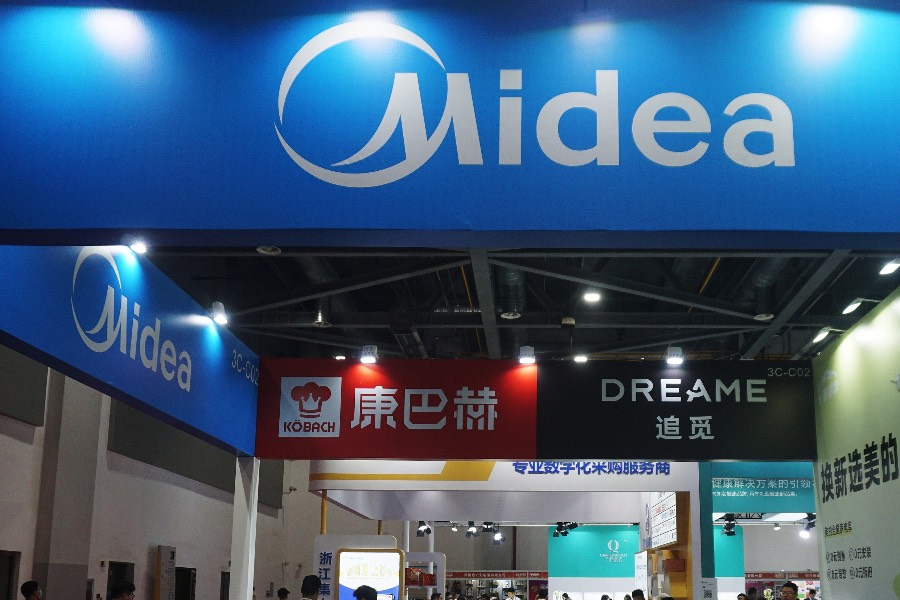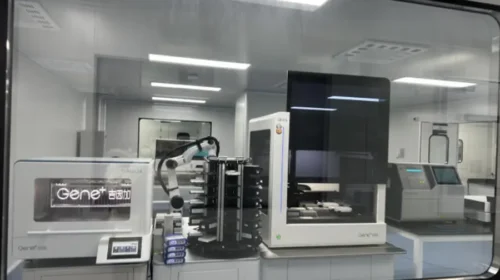Midea boosts European footprint in its globalization drive

The home appliance maker has acquired German brand Teka, whose products are used in half of all Spanish households
Key Takeaways:
- Midea has completed its acquisition of Teka, adding a high-end brand to its stable as part of its drive to move up the home appliance value chain
- Despite reporting strong first-quarter results, Midea remains vulnerable to a U.S.-led trade war that could spark a global recession
By Bai Xinrui
Known for its air conditioners and other home appliances, Midea Group’s (0300.HK; 000333.SZ) own house has just gotten a little bigger with its recent acquisition of German home appliance manufacturer Teka.
A German company with more than a century of history, Teka began as a maker of agricultural machinery before switching to kitchen devices like appliances, stainless steel sinks and range hoods. The company churns out more than 15 million items each year from 15 factories with nearly 3,000 employees in Europe, Asia and the Americas, and sells to more than 120 countries. In addition to Teka, its other brands include Küppersbusch, and Intra.
Midea previously disclosed that it had reached an agreement with Heritage last June to purchase 97% of Teka for 175 million euros ($195 million). That deal was approved by the European Commission in early March this year, paving the way for the transaction’s recent completion. In a separate deal, also in Europe, Midea bought Climate, a manufacturer of heating, cooling and ventilation equipment, in February this year for 542 million euros, marking a significant step in its diversification efforts.
Before those two acquisitions, Midea already presided over an increasingly crowded house whose brands included not only its original Midea, but also Colmo, Toshiba, Little Swan, Coolfree, Comfee and WAHIN, each with its own positioning. Colmo and Toshiba specialize in high-end brands, while Midea, Little Swan and Coolfree cater to the mass market, with Comfee and WAHIN mainly focused on young consumers.
Midea itself is quite the industry veteran, founded back in 1968 by He Xiangjian as a maker of simple products like glass bottles. As China opened up its economy to more participation by private enterprises, the country’s home appliance industry moved into the development fast lane, fueled by a new generation of people who could suddenly afford to buy things like refrigerators and washing machines.
Midea initially pivoted to electric fans, and later to other appliances like air conditioners, rice cookers, electric machinery, dishwashers, refrigerators and washing machines. It has gone on to become one of China’s leading manufacturers across numerous industrial chains for a wide range of home appliances.
Top appliance maker
According to Guosen Securities, Midea is currently the world’s biggest home appliance maker based on sales. It accounted for 7.9% of global home appliance sales in 2023 and ranked among the top three in multiple appliance segments such as air conditioning, washing machines and kitchen devices.
Its current business portfolio consists of two parts, namely, smart home appliances and commercial and industrial solutions. The latter can be further divided into new energy and industrial technologies, smart building technologies and robotics and automation.
Smart home appliances were the company’s main revenue source last year, accounting for about two-thirds of its total, with sales up 9.4% year-on-year to 270 billion yuan ($37.4 billion). Commercial and industrial solutions made up about a quarter of its revenue pie, bringing in 104.5 billion yuan, up 6.9% year-on-year.
The company’s industrial robot business has come under pressure lately, hit by slowing growth in China’s new energy vehicle (NEV) sector and painful adjustments in its solar industry, which is suffering from massive oversupply. At the end of last year, the gross margin for its commercial and industrial solutions fell 0.7 percentage points. But that weakness was more than offset by improvements in other areas, leading to a 0.7 percentage point rise in the company’s overall gross margin to 26.2%.
Midea’s smart home appliance business did especially well, with its gross margin rising 1.3 percentage points year-on-year to 30%. The company attributed the gains to a growing share of high-margin products in its product mix, as the company transitions to higher-end and smart products that are typically more profitable than traditional products.
The recently acquired Teka fits in with that strategy, positioned as a mid- to high-end brand that enjoys a strong reputation in the European home appliance market. Teka points out on its website that half of Spanish households own its products, and it was once a chief sponsor of leading Spanish soccer club Real Madrid Club de Fútbol.
Midea is probably hoping to do with Teka what it did with its acquisition of the home appliance business of Japan’s Toshiba in 2016. Working similar magic with its latest German acquisition could further bolster Midea’s gross margins by reinforcing its position as a purveyor of high-end products.
Tariff risks
One of Midea’s biggest risks is its international exposure, since overseas sales currently account for 41.3% of its total, with the rest going to its home China market. Management previously described the company’s exposure to the U.S. and potential impact from the ongoing U.S.-China trade war as limited. Still, the company could face a broader risk if the trade war ultimately triggers a global recession, which would dampen demand for many of the company’s relatively big-ticket items.
The good news is that such a recession has yet to materialize, and, to the contrary, the company reported glowing first-quarter results due to its positioning as a market leader. According to its report from its Shenzhen-listed unit, which uses Chinese accounting standards, the company’s revenue jumped 20.5% in the first quarter year-on-year to 127.8 billion yuan, while its net profit rose by an even bigger 38% to 12.4 billion yuan.
Still, analysts remain cautious on Midea’s business prospects, forecasting only 3.6% profit growth this year and 9% growth in 2026. The company’s Hong Kong-listed shares currently trade at a forward price-to-earnings (P/E) ratio of 12.5, higher than 9.8 times for Haier Smart Home (6690.HK) and 8.5 times for Hisense Home Appliances (0921.HK), suggesting limited upside for its stock.
With the Teka purchase under its belt, Midea looks generally better positioned to achieve two goals, namely, building up its stable of brands and bringing in more global names, while also enhancing its gross margin and boosting its international business as a share of overall revenue to reduce its reliance on China. That said, the possibility of a global recession unleashed by the U.S.-led trade war still poses a significant risk to its future.
To subscribe to Bamboo Works weekly free newsletter, click here





